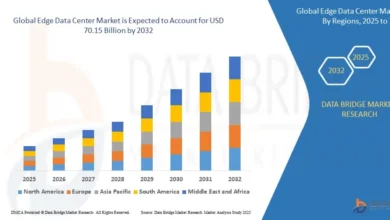Essential Tools for eCommerce Marketplace Design
Creating a successful eCommerce marketplace requires more than just an appealing website or a basic mobile application. It involves integrating essential tools and technologies that enable smooth operations, user-friendly experiences, and efficient backend processes. From design and development to analytics and marketing, every aspect of the platform must be carefully crafted and supported with the right tools. In the journey of eCommerce Marketplace Development, choosing the right set of design tools plays a crucial role in building a robust and scalable online business. In this blog, we will explore some of the most essential tools for eCommerce marketplace design and how they contribute to long-term success.
Selecting the Right CMS for Your Marketplace Platform
A Content Management System CMS is the backbone of your eCommerce marketplace. It allows you to manage content, users, and products without writing code. Tools like WordPress with WooCommerce, Magento, and Shopify offer robust CMS features tailored for online marketplaces. These platforms provide flexibility, scalability, and integration options for custom designs and third party services. A powerful CMS also supports multilingual content, SEO friendly structures, and secure access control which are all essential for running a global eCommerce business.
User Interface and User Experience Design Tools
The success of your eCommerce marketplace largely depends on how users interact with your platform. UI and UX design tools like Figma, Adobe XD, and Sketch help designers build intuitive and visually appealing interfaces. These tools support collaboration among team members and allow the creation of interactive prototypes. A user focused design enhances customer satisfaction, increases engagement, and improves conversion rates. Investing in high quality UX design tools ensures your marketplace remains competitive and aligned with modern user expectations.
Frontend Development Technologies for a Responsive Layout
Frontend development involves creating the visual elements of your marketplace that users interact with. Tools and frameworks like React, Vue.js, and Angular allow developers to build responsive and dynamic interfaces. These technologies help improve page load times and enable features such as real time updates and interactive product galleries. A responsive layout ensures your marketplace looks and functions seamlessly across devices including desktops, tablets, and smartphones. This is especially important in the era of increasing mobile commerce where buyers expect smooth browsing and checkout experiences.
Backend Development Frameworks for Strong Infrastructure
The backend of your marketplace handles data processing, user authentication, payment gateways, and other critical operations. Tools like Node.js, Django, and Laravel are commonly used for backend development because of their scalability and performance. These frameworks offer structured environments for secure coding, efficient data handling, and easy API integration. A strong backend foundation ensures your marketplace can handle large volumes of traffic and data transactions without lag or security issues.
Database Management Tools for Product and User Information
Managing large sets of data including user profiles, product details, orders, and inventory requires efficient database systems. Tools like MySQL, PostgreSQL, and MongoDB provide robust database management capabilities. These tools offer real time syncing, fast querying, and secure data storage which are essential for maintaining marketplace integrity. Choosing the right database solution is critical for scaling your business and ensuring data reliability. It also supports advanced analytics and personalized recommendations based on customer behavior.
Payment Gateway Integration and Transaction Tools
One of the most crucial components of an eCommerce marketplace is its ability to handle secure and smooth transactions. Payment gateway tools like Stripe, PayPal, and Razorpay allow marketplace owners to offer multiple payment options including credit cards, wallets, and local payment methods. These tools come with fraud detection, tax calculations, and multi currency support which are vital for international marketplaces. Seamless transaction experiences not only enhance user trust but also reduce cart abandonment rates.
Marketing and Analytics Tools to Grow and Optimize Sales
To attract and retain customers, your marketplace needs strong marketing tools. Platforms like Google Analytics, Mailchimp, and SEMrush help track performance and manage campaigns effectively. These tools provide insights into user behavior, product performance, and campaign ROI. They also support email marketing, retargeting, SEO optimization, and customer segmentation. Using data driven strategies through analytics tools allows marketplace owners to make informed decisions that boost growth and engagement.
Mobile Optimization and App Development Tools
With the rise in mobile shopping, having a mobile optimized design or a dedicated mobile app is no longer optional. Tools like Flutter and React Native help in building cross platform mobile apps that deliver native like performance. These frameworks reduce development time and cost while maintaining high quality user experiences. Engaging a reliable Mobile App Development Service ensures that your marketplace offers secure, fast, and user friendly mobile access. This significantly increases reach and customer satisfaction.
Testing and Quality Assurance Tools for Platform Stability
Ensuring that your marketplace is bug free and performs reliably across different environments is crucial. Tools like Selenium, BrowserStack, and Postman help in automating testing processes and identifying issues before deployment. These tools allow developers to simulate user actions, test APIs, and ensure browser compatibility. Regular testing helps maintain performance, security, and user trust in your marketplace. It also minimizes downtime and enhances customer loyalty by offering a consistent experience.
Final Thoughts on Building a High Performance Marketplace
Choosing the right tools is fundamental to successful eCommerce Marketplace Development. Each tool serves a specific function whether it is improving design, enhancing performance, or increasing customer engagement. By integrating essential technologies and continuously optimizing your platform, you lay the foundation for a scalable and profitable online marketplace. Additionally, considering services like Ecommerce App Development can give your platform a competitive edge by offering faster, more personalized mobile experiences.
Whether you are launching a niche marketplace or a multi vendor global platform, using the right mix of design, development, and analytics tools is the key to long term success. Prioritize user experience, security, and scalability as you build your digital infrastructure. The right tools combined with strategic planning will ensure that your eCommerce marketplace stands out in a competitive digital landscape.




